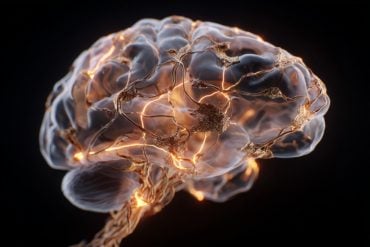Summary: A new study reveals that how people think about and cope with chronic pain is more important than the pain itself in determining physical activity levels. Researchers found that individuals with higher pain resilience — the ability to maintain positive functioning despite pain — were significantly more active than those with lower resilience.
Factors like pain intensity or fear of movement made little difference once resilience was considered. The findings suggest that interventions focusing on building psychological resilience could transform chronic pain management and improve overall health.
Key Facts:
- Pain Resilience Matters: High resilience predicted greater physical activity regardless of pain intensity.
- Mind Over Pain: Fear of movement and pain sensitivity had little effect once resilience was accounted for.
- Therapeutic Potential: Strengthening resilience could help patients remain active and enhance well-being.
Source: University of Portsmouth
Pain affects activity levels, but how individuals understand and act in the face of pain can make a difference, a new study from the University of Portsmouth has found.
The paper, published in PLOS One identified that pain resilience – how well individuals cope with pain – affects physical activity independently of pain, and boosting resilience could enhance both pain management and overall health.

Led by Dr Nils Niederstrasser from the School of Psychology, Sport and Health Sciences at the University of Portsmouth, the study analysed data from 172 participants suffering from chronic pain, using statistical models to understand how pain resilience affects the relationship between pain and physical activity.
The study examined factors such as fear of movement, frailty, the number of painful areas, pain duration, and intensity, both individually and together – to identify which most influenced activity levels.
It found that high pain resilience was the key component associated with higher physical activity levels, while other aspects such as kinesiophobia – fear of movement – did not make a significant contribution.
The study suggests it’s not the pain itself, but how well people cope with it that largely determines activity levels. This underscores the central role of pain resilience, which continued to be a key predictor of activity even after accounting for pain intensity, emphasising the need to build resilience rather than focus solely on reducing pain.
Dr Niederstrasser, from the University’s Faculty of Science and Health, said: “What we found is that it’s not how much pain you’re in that determines whether you stay physically active – it’s how you think about and respond to that pain, indicating that how individuals respond to and think about pain matters more than their actual pain sensitivity.
“We suspected resilience plays a major role, and this study helped confirm that.”
The researchers also concluded that treatments focusing on building resilience could help chronic pain patients become more active and improve their overall health.
Dr Niederstrasser added: “People with greater resilience can maintain a positive attitude and push through discomfort, and this psychological factor is a better predictor of physical activity than pain intensity itself.
“This is a significant shift from historically focusing on negative factors like fear of movement, to understanding the power of positive psychological resilience in managing chronic pain.”
This research builds on a previous study by Dr Niederstrasser which showed that high levels of physical activity can lower the risk of developing chronic pain. The research detailed how pain prevention programs should include exercise, weight management, and support for social inequalities.
“Moving forward, further research could examine whether enhancing resilience in individuals with chronic pain leads to increased activity levels, potentially through targeted interventions”, added Dr Niederstrasser.
Key Questions Answered:
A: Pain resilience is the psychological ability to maintain activity and positivity despite chronic pain, helping people function better even when discomfort persists.
A: Activity levels weren’t determined by how much pain participants felt, but by how well they coped with that pain — highlighting mindset over sensation.
A: Treatments may shift focus from only reducing pain to building resilience through psychological training, motivation, and support to help patients stay active.
About this pain research news
Author: Lauren Harrison
Source: University of Portsmouth
Contact: Lauren Harrison – University of Portsmouth
Image: The image is credited to Neuroscience News
Original Research: Open access.
“Indirect associations of pain resilience and kinesiophobia with the relationship between physical activity and chronic pain” by Nils Niederstrasser et al. PLOS ONE
Abstract
Indirect associations of pain resilience and kinesiophobia with the relationship between physical activity and chronic pain
Background
Pain is associated with a decrease in physical activity for most individuals. Nevertheless, some individuals manage to maintain physical activity levels despite pain. While the exact psychological mechanisms behind this are unknown, it may possibly be due to low kinesiophobia and high pain resilience levels. This study aimed to examine the direct and indirect associations of pain resilience and kinesiophobia with the relationship between pain and physical activity.
Methods
In this cross-sectional study data were collected from 172 participants suffering from chronic pain. Three path models were fitted to assess the indirect associations between pain resilience and kinesiophobia in the relationship between physical activity and musculoskeletal pain individually and simultaneously. Additionally, a linear regression model was fitted to examine the impact of psychological predictors of physical activity while accounting for musculoskeletal pain.
Results
Significant proportions of the association between musculoskeletal pain on physical activity occurred through both pain resilience and kinesiophobia. Nevertheless, when examined simultaneously, only the indirect associations via pain resilience remained significant. Similarly, when predicting physical activity levels, only high levels of pain resilience and male gender were associated with increased physical activity levels, whereas kinesiophobia was not.
Conclusions
This highlights the central role pain resilience plays in retaining physical activity levels when faced with chronic pain. It also implies that pain resilience predicts physical activity levels beyond pain intensity, kinesiophobia, pain duration, and pain spread. It is, therefore, imperative to examine avenues of increasing pain resilience among individuals suffering from chronic pain, not only to improve their pain, but also their overall health and well-being.
This possibly bears implications for clinical practice and may inform treatment approaches, whereby pain resilience may be boosted to increase physical activity levels. Nevertheless, given the cross-sectional design, longitudinal and experimental studies are needed to confirm the causal pathways.






